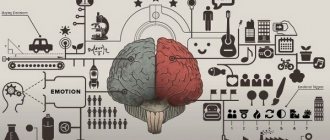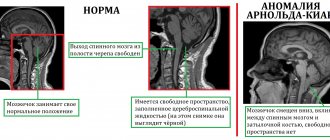Content:
- Alprazolam: general description of the drug: 1.1. Mechanism of action. 1.2. Indications for use. 1.3. Contraindications and features of use. 1.4. Why Alprazolam is dangerous: side effects and symptoms of overdose.
- How does addiction to Alprazolam develop?
- How to relieve addiction to Alprazolam: principles of treatment.
Alprazolam is a drug from the group of benzodiazepines, hypnotics and sedatives that inhibit the activity of the central nervous system. Benzodiazepine tranquilizers became firmly established in medical practice several decades ago, but they are still very often prescribed in psychiatry and neurology. But at the same time
Alprazolam is more likely than other medications of this pharmacological group to cause drug dependence. And often a person continues to take pills even after completing the course of treatment, obtaining them fraudulently in pharmacies or on the illegal drug market. It is not easy to cope with the uncontrolled use of the drug without the help of a narcologist, because a sudden cessation of its use is accompanied by a real withdrawal syndrome. This condition requires mandatory detoxification, psychotherapy and subsequent rehabilitation.
Alprazolam: side effects, contraindications and precautions
The following undesirable reactions are possible when taking the medication:
- Hypersedation: daytime sleepiness, forgetfulness, impaired coordination of attention, slow reaction speed. The severity of these side effects largely depends on the prescribed dosage.
- Myorelaxation , which is manifested by general muscle weakness, a feeling of weakness.
- Agitation, sleep disturbances : may occur at the initial stage of treatment. In the vast majority of cases, these symptoms resolve on their own as therapy continues.
Much less likely are:
- dry mouth;
- nausea;
- decreased libido;
- menstrual irregularities, etc.
Precautions for use
- Reception during pregnancy and lactation. Alprazolam is found in breast milk, therefore, if there are indications for prescribing the medication, it is recommended to transfer the child to artificial feeding. During pregnancy, the use of the drug is strictly contraindicated due to the high risk of developing intrauterine pathologies.
- Use in old age. Slow elimination of the drug is possible, which requires adjustment of the daily dosage.
- Therapy for liver and kidney diseases. Severe pathologies of the urinary and hepatobiliary systems cause changes in the pharmacokinetic properties of Alprazolam, therefore it is prescribed at a lower dose.
- Possibility of combination with other medications. During treatment, you should take certain antiviral, antifungal, antiulcer agents, selective serotonin reuptake inhibitors, antihistamines, and anticonvulsants with caution.
Alcohol and other psychostimulants have the same mechanism of action as benzodiazepines, so combining them can cause severe overdose.
Contraindications
- decompensated renal and liver failure;
- severe damage to the respiratory tract;
- angle-closure glaucoma;
- hypersensitivity;
- alcoholism, drug addiction, taking narcotic analgesics, sleeping pills and potent sedative medications.
general description
Alprazolam has all the properties of “classical” tranquilizers. The spectrum of its pharmacotherapeutic activity includes the following effects:
- anxiolytic;
- sedative;
- hypnotic;
- muscle relaxant;
- anticonvulsant.
Due to the high affinity for specific endogenous benzodiazepine receptors, the effect of the drug develops faster. It differs from its analogues in less severe adverse reactions: it causes daytime drowsiness, sudden mood swings, and lethargy much less frequently. That is why it is very often used in outpatient practice.
Mechanism of action
The therapeutic effect of Alprazolam is associated with its selective effect on various classes of GABA receptors (GABA or γ-aminobutyric acid is the main “inhibitory” neurotransmitter). They are localized in the cerebellum, hippocampus, spinal cord and other parts of the central nervous system. By interacting with GABA receptors, Alprazolam indirectly affects the functions of the noradrenergic, serotonergic, cholinergic and opioidergic systems. This is what explains the effectiveness of the medication for anxiety and depressive symptoms.
The drug also has lipophilic properties, so it binds well to plasma proteins and easily penetrates the blood-brain barrier. Thanks to this, the therapeutic effect appears very quickly. Up to 75–80% of the drug is excreted unchanged from the body in the urine, the rest is metabolized in the liver.
Indications for use
As practice and clinical research data show, Alprazolam is most effective for pathologies accompanied by anxiety, fear and restlessness. This:
- panic, obsessive-compulsive, acute stress, generalized anxiety disorder;
- some forms of depression;
- phobias;
- alcohol or drug withdrawal (with caution due to the risk of complications);
- severe premenstrual syndrome;
- somatic diseases accompanied by anxiety syndrome.
Contraindications and application features
Based on the characteristics of metabolism, Alprazolam is prescribed with caution in chronic pathologies of the liver and kidneys. In such cases, individual dose selection is required. A gradual accumulation of the drug and a high risk of intoxication cannot be ruled out. Therefore, for such diseases, the medication is prescribed only according to strict indications and the impossibility of choosing a safer analogue.
During the course of treatment with Alprazolam, medications that reduce the activity of liver enzymes are contraindicated. These are the following:
- antiviral;
- antifungal;
- some antibacterials (in particular, erythromycin and ciprofloxacin);
- antidepressants;
- antiulcer (omeprazole), etc.
Due to the risk of overdose, narcotic analgesics, other sedative and hypnotic medications, and alcohol are strictly prohibited. Alprazolam is contraindicated in:
- respiratory failure, obstructive chronic pulmonary diseases;
- individual intolerance and allergic reaction;
- pregnancy due to the risk of severe congenital malformations of the fetus, you should also stop breastfeeding;
- in childhood and adolescence (up to 18 years);
- severe depression with suicide attempts (benzodiazepines increase the symptoms of the disorder).
Why Alprazolam is dangerous: side effects and overdose symptoms
The most common adverse reactions are of a neurological nature. This feeling of fatigue, dizziness, drowsiness, exercise intolerance, general malaise. They are most pronounced at the initial stage of the course of treatment, and then gradually disappear in most patients. Also possible:
- lack of appetite;
- stool disorders, heartburn, flatulence;
- weight gain;
- in women - irregular menstrual cycle.
Overdose is accompanied by severe symptoms:
- slurred speech;
- impaired coordination of movements;
- slowing down the reaction rate;
- respiratory depression.
However, exceeding the daily dose is especially dangerous if you are dependent on Alprazolam, when the person no longer follows the doctor’s recommendations. When combined with alcohol or drugs, an overdose can be fatal.
Alprazolam: action and general description
The medicine has the following medicinal properties:
- anxiolytic;
- sedative;
- sleeping pills;
- antidepressant;
- antiphobic;
- anti-anxiety;
- muscle relaxant;
- anticonvulsant.
In addition, the wide range of therapeutic effectiveness of Alprazolam helps to alleviate the symptoms of concomitant somatic diseases.
The drug has antihypoxic, hypotensive, antiarrhythmic activity. Alprazolam differs from other medications of this pharmacological group in its more pronounced effectiveness due to its high affinity for specific benzodiazepine receptors of the central nervous system, average duration of action, due to which daytime drowsiness is either absent or less pronounced.
The principle of action of the drug is based on increasing the sensitivity of benzodiazepine receptors to GABA (γ-aminobutyric acid) - one of the main “inhibitory” neurotransmitters of the central nervous system.
Indications
The drug is prescribed for:
- anxiety states;
- phobic disorders;
- panic attacks;
- depression (as part of complex therapy);
- neuroses;
- insomnia;
- withdrawal syndrome when giving up alcohol and psychostimulants, accompanied by irritability, aggression, severe anxiety, psychomotor agitation;
- epilepsy;
- psychosomatic diseases.
Reception mode
Available in tablets containing 1 mg of active ingredient. The dose is selected strictly individually, the initial dose is usually 0.75 mg (for severe disorders - 1.5 mg). If necessary, it is increased to 3–4 mg. The duration of treatment depends on the diagnosis. Due to the risk of developing tolerance and addiction, Alprazolam is discontinued gradually, slowly reducing the daily dose.
How does addiction to Alprazolam develop?
The standard daily dose of a tranquilizer is 0.75–4.5 mg, which is divided into three doses (it is recommended to take the tablets at the same time). The risk of developing psychological and physical dependence on Alprazolam is especially high if the course of treatment lasts longer than 4–6 weeks.
One of the prerequisites for the safe use of benzodiazepines is their gradual, slow withdrawal with a gradual reduction in the daily dosage. Quitting Alprazolam often takes longer than the therapy itself. Abrupt withdrawal of medication causes:
- recurrence of initial symptoms: feelings of anxiety, fear and other emotional and mental disorders reappear;
- “recoil syndrome”, which is accompanied by insomnia and panic attacks.
But the most difficult to tolerate is withdrawal syndrome, which manifests itself:
- irritability, depression, apathy;
- nausea, vomiting;
- malaise, weakness and weakness;
- increased sensitivity to bright light, loud sounds, strong odors;
- decreased concentration;
- convulsive seizures;
- hallucinosis;
- crazy ideas;
- depersonalization;
- pain syndrome;
- tremor of hands, tongue;
- tinnitus;
- slow speech and general lethargy.
It is these symptoms that force the patient to return to the pills, and often he takes the medicine in a higher dose than was prescribed by the doctor. At the same time, there is a fear of stopping treatment, because this is accompanied by a pronounced deterioration in well-being.
Risk factors and symptoms of addiction
Addiction develops if the course of treatment exceeds 4–5 months or if the patient takes the drug in a dose exceeding that recommended by the doctor. The main symptom of addiction is withdrawal syndrome, which manifests itself:
- tachycardia;
- irritability, anxiety;
- sleep disorders;
- sweating, chills;
- general weakness and weakness;
- headache, etc.
As the addiction progresses, the person is no longer able to cope without the medication. He cannot sleep fully, there is a constant feeling of internal tension, anxiety and restlessness. Moreover, he begins to independently increase the daily dosage, sometimes drinking alcohol or other psychotropic drugs to enhance the effect.
To get rid of drug addiction, the patient is recommended a course of psychotherapy and rehabilitation . They also select remedies to correct insomnia, emotional lability and other related disorders.
How to break your addiction to Alprazolam
A strict indication for drug detoxification is symptoms of overdose. Cleansing therapy is carried out only in a hospital, it consists of the following stages:
- gastric lavage;
- use of high doses of adsorbents;
- use of medications from the group of benzodiazepine receptor antagonists;
- correction of concomitant somatic disorders.
If there is no effect from the procedures performed, hemodialysis and plasmapheresis are indicated.
However, the vast majority of patients started taking the medication for therapeutic reasons, and detoxification will inevitably lead to relapse. That is why the drug is continued, but in order to relieve dependence on Alprazolam, its dose is gradually reduced over several weeks.
In this condition, round-the-clock medical monitoring and timely pharmacological correction of possible complications are necessary. Therefore, until the end of treatment, the addict must remain in an inpatient drug treatment clinic.
A course of psychotherapy is mandatory. Experts suggest that consultations with a psychologist will help cope with the underlying disease, for the treatment of which Alprazolam was, in fact, prescribed. Sometimes, if psychotherapy is not enough, antidepressants and “mild” sedatives are additionally selected.
Undoubtedly, many diseases cannot be treated without benzodiazepines, but in order to avoid the development of dependence, it is important to strictly follow all the recommendations of the attending physician regarding the dosage regimen. Exacerbation of the condition, emotional discomfort, or any symptoms that bother the patient are mandatory indications for consulting a doctor.
Use in drug addicts
Alprazolam is used without a doctor's prescription to induce a state of mild euphoria and relaxation. Drug addicts take the drug alone and in combination with other psychoactive drugs and alcohol. Intoxication is manifested by a feeling of peace, physical comfort, calm, and self-confidence. The sense of danger becomes dull, concentration of attention decreases, reality begins to be perceived distorted. Often, patients behave inappropriately to the situation, show excessive and senseless courage, exposing themselves to danger (they go out onto the roadway with active traffic, stand on the windowsill with the window open).
Literature:
- Fursov B.B., Papsuev O.O. Use of alprazolam in clinical practice. - Special clinical psychiatry, 2012. - vol. 22, no. 1.
- Mosolov S.N. Alprazolam is the first benzodiazepine with a thymotranquilizing effect. - Doctor, 1999. - No. 8
- Kalinin V.V. New data on the use of alprazolam in psychiatry (literature review). - Psychiatry and psychopharmacotherapy, 2000. - T.2, No. 4.
- Sychev D.A., Zhuchkov A.V., Tereshchenko O.V. Gradual withdrawal (deprescribing) of benzodiazepine tranquilizers. — Neurology, neuropsychiatry, psychosomatics, 2021. — 11(1).
The text was checked by expert doctors: Head of the socio-psychological service of the Alkoklinik MC, psychologist Yu.P. Baranova, L.A. Serova, a psychiatrist-narcologist.
CAN'T FIND THE ANSWER?
Consult a specialist
Or call: +7 (495) 798-30-80
Call! We work around the clock!
Treatment
Drug dependence can be treated on an inpatient or outpatient basis. Therapy begins with discontinuation of the dose: then either the usual dose is reduced, or the drug is replaced with doses of barbiturates. At the same time, the consequences of drug withdrawal are eliminated: they relieve pain, cramps, and restore heart rhythm. The next stage is a course of psychotherapy, which helps to overcome psychological dependence. To consolidate the results of treatment, it is recommended to undergo a rehabilitation course.
If your loved ones need help in treating drug addiction, then sign up for a free consultation by calling the hotline of the Zdravnitsa professional treatment and rehabilitation center: 8-800-200-27-23 . Our specialists will select an effective treatment plan and accompany you throughout the course. We guarantee results if all our recommendations are followed.
Similar articles:
Cocaine: the effect and consequences of the drug
How long does amphetamine stay in the body?
Drug addict's breakdown during self-isolation
How to test a child for drugs
How is a drug addict hospitalized in a hospital?
2 comments on “Alprazolam (Xanax) is the most popular drug among young people”
- Rush:
July 23, 2021 at 05:23
My mother is 86 years old. She has been taking the drug for about 15 years. I don’t even remember which doctor prescribed it to her. A nightmare! She's a real drug addict. They tried many times to get off this drug. Useless. The addiction will disappear only with her death. We, her children, see no other way out.
Answer
- Vlad:
September 20, 2021 at 09:25 pm
Who told you that Xanax is taken by drug addicts? Xanax 0.5 mg. sold in any supermarket in Germany. When I fly there to visit my family, I often see him at the ticket counter. Whoever wants it takes it, and no one will consider him a drug addict. Because young people experience wild overstrain, insomnia, panic anxiety. Chemists have not yet come up with a replacement for this drug; it is a unique anxiolytic. Mom has been working there for 25 years, and nothing happened, and she easily mastered German, and worked there among the Germans. You just need moderation in everything, and so it is here.
Answer









